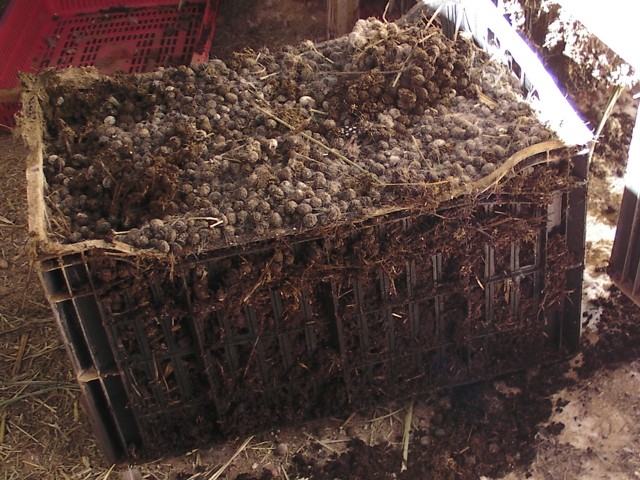
Shit happens, as they say, and if you don’t deal with it, it will breed flies, pathogens, and other pests. There are several great ways to use it. You can compost it or feed it to other animals.
Most manure still has a large amount of unused nutrition in it. This is because the digestive systems of almost all animals are not 100% efficient. Many animals will eat the manure of other species. This should not be seen as something disgusting that should be avoided. On the contrary, it is natural, efficient and beneficial.
Many omnivores will choose to eat the manure of herbivores. This manure generally consists of predigested grass or other plants, making the nutrients in plants more accessible to animals that are not efficient at converting plant matter. It is highly nutritious and fibrous.
Similarly, the manure from omnivores makes a good food for many decomposers, like BSF and worms. They will use the leftover nutrition and convert it into a different product.
Manure is, after all, an integral part of life’s natural energy cycle. Energy is never used up, it just changes from one form to another. In any healthy ecosystem, there are always species ready to consume the new type of energy.
Manure should definitely not be the only food source given to any animal. If the manure makes up too high a percentage of the feed given to an animal, it can start to be detrimental to healthy growth. Each animal is different, and you will need to experiment to find each one’s upper limit. The animal itself, if it is intelligent like a pig, will instinctively know how much manure he or she wants to consume.
You should also only ever recycle the manure of healthy animals. Some diseases can jump from one species to another, and care should be taken to quarantine any sick animal, and that includes its waste.
For more information about integrating manures and animal wastes, check out Food Web.
Compost is the fallback option for all manure. If you cannot use it as a feed source, it should end up on the compost pile. For more information about how to make and use compost, read our how-to on the subject.
Once compost has completely broken down, it can then be used on your gardens or orchards. It is extremely beneficial to plants and will increase the quality and quantity of your produce.
If you have manure or compost piles on your property, sooner or later there will be flies. They are one of the most irritating insects (besides mosquitoes) if you let them have their way. There are however many ways to control, and even use, them.
The life cycle of the common housefly involves a transformation from an egg, to larva, to pupa and finally a fly. An adult female will lay about 150 eggs in a batch, and will lay five or six batches over a few days. It takes a day for the eggs to hatch into larvae, or maggots. After a further three to five days, those maggots will pupate. They then emerge from the pupae into fully formed flies after three to six days. A couple of days later, those flies are ready to breed. No wonder, they can get so out of control so quickly.
Once of the best remedies against a plague of flies is poultry. If you have chickens scratching around in any manure or compost piles, it is unlikely that any maggots will survive.
Fly parasites can also be used in the control of flies. The female will lay her eggs on the pupae of flies. As they grow, they will feed on the developing fly, preventing it from emerging from its cocoon. We have tried these, and although they are effective, they have not been sustainable for us. To continue using them, we have had to buy more, as they do not seem to survive for long (perhaps because our climate is semi-arid).
One of our favorite methods of fly control, besides chickens, is making our own traps. We use this mainly for areas where we do not want the chickens to go (like humanure bins).
This trap is a mini protein farm, and will help to wipe out whole generations of potential flies.
You can make methane, or biogas, at home by adding human and animal manure into a methane digester. The gas can be used for heating, cooking or any other way in which you would use propane.
Biogas or methane is the product of anaerobic bacteria as they break down organic waste. Methane can be burned in a stove or used in a generator as a fuel similar in use to Natural Gas. In fact, Natural Gas is mostly methane. Biogas production can be a great asset in a self-sustainable homestead because it provides high Btu energy and uses waste as an input. The byproduct of the production process can be used similar to other composts.
Feedstock for the Biogas process can be any organic matter, although close attention to the carbon to nitrogen ratios must be observed for maximum production. A 30:1 ratio is ideal. Most large systems use animal manure as a major feedstock, but vegetable, animal, and human wastes can also be used. As an added benefit, pathogens are rapidly digested in this process. However, some weed seeds may not be destroyed.
For a more in depth look at methane as an energy source and how to make it, click here.